Nail cutters: features, types and tips for choosing
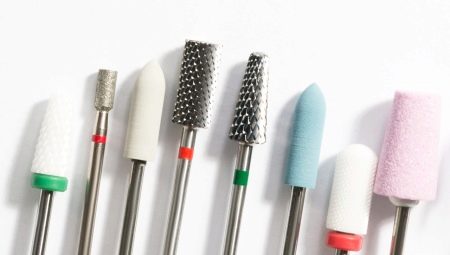
Any nail cutter creates a single cycle of hardware manicure. The attachments have the necessary shapes, which depend on their type of application, and any of them cannot be replaced by another type of tool.
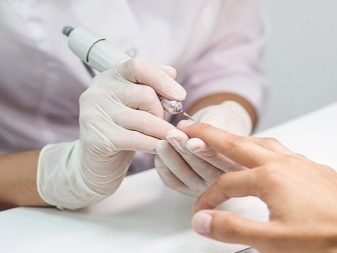

Hardware manicure
An alternative to edged manicure is hardware - this is grinding the nail plate and the skin around it using an electric device and cutters that rotate. This method of nail polishing does not involve the use of scissors or other cutting objects.
With a conventional manicure, the cuticle is not cut evenly, which affects the occurrence of burrs and trauma.
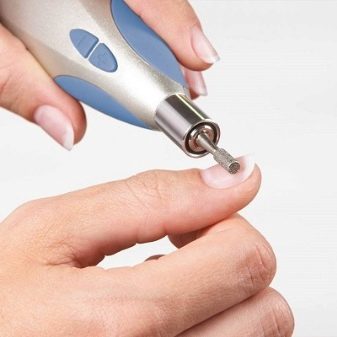
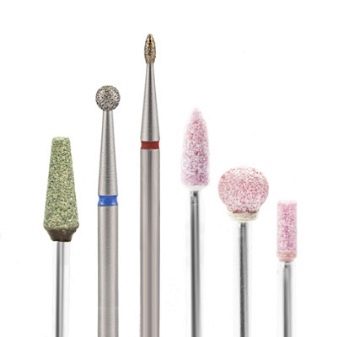
Grinding nails using cutters:
- it is low-traumatic, when the instrument is handled correctly, it removes keratinized areas without injuring the cuticle;
- allows you to form a line without flaws the first time;
- makes it possible to grind the skin around the nail, and this cannot be done in an edged manicure.
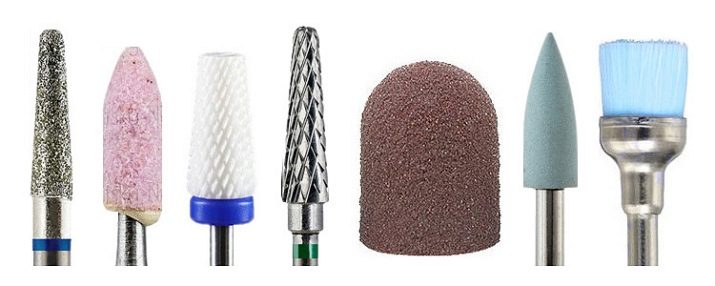
Varieties of tools
Hardware manicure consists of several stages. The first of them is preparatory, which consists of removing the artificial covering, drying the nail plate and cuticle. At this stage, hard metal or ceramic manicure products are used.
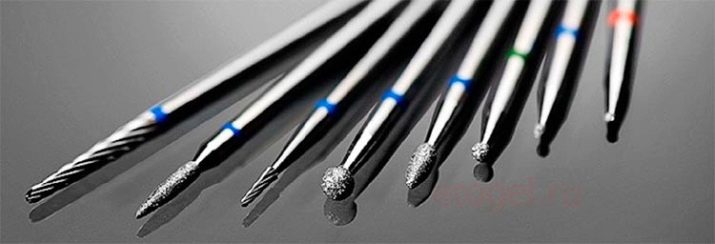
A hardware manicure requires several tools.
- Non-natural diamond coated bitThe cylindrical configuration is a tool included in all beginner kits.The plus is that with the help of it you can gently and layer by layer remove material. Disadvantages: it has a lower speed of removal of regular or gel polish than ceramic.
- Cylindrical diamond cutter. It has the shape of a truncated cone with a diametrical serration in the form of a spiral. The truncated part grinds the rollers from the sides, and the side - the length of the nail. Positive quality - you can gently file off the nail, and negative - the notches are constantly clogged, and they need to be cleaned in time.
These types of cutters include "pear". As the name implies, the nozzle looks like this fruit.
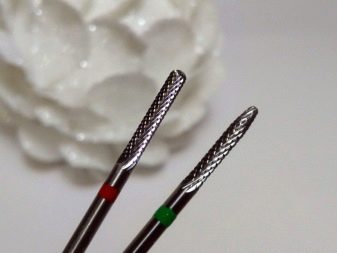
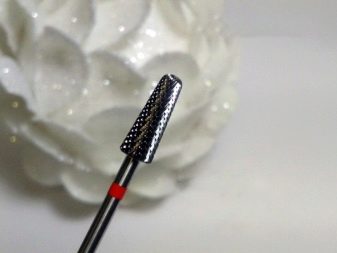
- Cutter with a truncated cone for a manicure machine. Made of hard alloys, tapered, with diametrical or cruciform grooves. The disadvantage is that it is unacceptable for beginners, since experience in its application is needed. It is very tough in work and removes a large layer of the nail, and if the revolutions are low, then vibration is transmitted to the nail plate.
- Ceramic "corn" found its use in home and salon conditions. It has a different size of notches. Pros: cuts off varnish at high speed, while acting gently. Cons: high cost, and the heating process is also observed at low speeds.
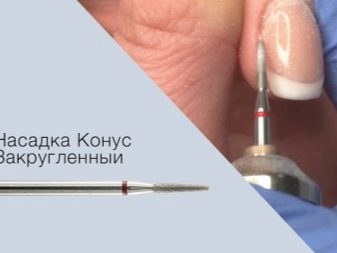
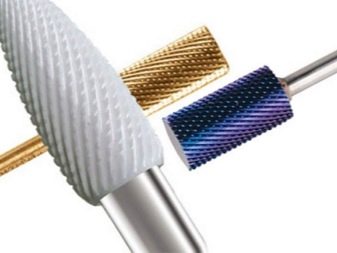
The skin around the nail is processed using special attachments.
- Needle or fissure attachment. It is a tapering cone ending with a thin tip. A kind of pusher and spatula used in edged manicure. The attachment is designed for one of the nail polishing cycles - lifting the skin around it. Placed at a certain angle, its upper part adjoins the extreme layer of the cuticle, and the lower part does not reach the nail. The thin tip creates a groove between the cuticle and the nail plate, which makes it possible to prevent injury to the nail. The side of the truncated cone nozzle is led from right to left, and the rib of the nozzle cuts off most of the cuticle. Then, with a corundum nozzle, clean up all the remaining skin.
- Bullet nozzle it is used for a more in-depth treatment of the nail sinuses, this is due to the fact that it expands towards the base. But for polishing the skin in the nail area, it is undesirable.
- Ball nozzle suitable for cleaning the nail from cuticle residues and for grinding the lateral ridges.
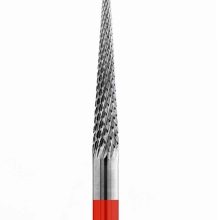
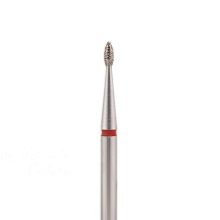
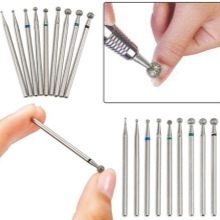
Materials (edit)
Ceramic is used to cleanse the keratinized skin from the nail plate, it copes very quickly with artificial coating. The attachments are used at low rotation speeds. Corundum cutters are designed to gently remove the bottom layer of the cuticle. Carbide cutters are used for polishing cuticles and side ridges. Cutting off gel polish with such cutters is a rather lengthy process, but they allow you to avoid injury. Diamond tools contain natural or unnatural diamond grit in their structure.


How to replace?
In order to change the cutter on the device, there are several special devices.
- Manual clampwhich can be opened by pressing a button. Then open the gap for the handle and insert it.
- Semiautomatic device works when the handle is turned clockwise. Having changed, you need to turn the handle in the opposite direction until you hear a click. This type of replacement is more comfortable than the previous one. It is used in devices both in the salon and at home.
- Automatic clamping - here you need to insert the cutter, and it will lock itself.
This mode is found in expensive devices that are used in salons.

Newbie Tools
These include several options for simple equipment for manicure.
- Cylinder-drum, one of them can replace other cutters due to the peculiarities of the structure. The side part acts like a spherical nozzle, and the rib, like a truncated cone.
- And also a nozzle is desirable for a beginner, which would penetrate under the side parts.
- A pointed cone is a cross between a cylindrical and a fissure nozzle. The most comfortable tool for putting your nails in order.
- Nozzle for polishing the nail and skin around it.
- A ceramic cutter with small teeth, which will allow you to remove the coating of conventional and gel polish without straining.
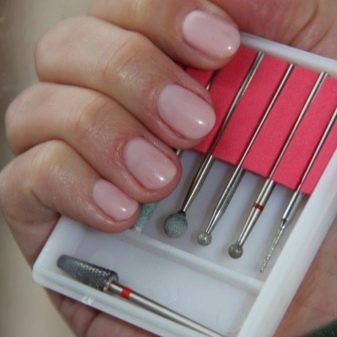
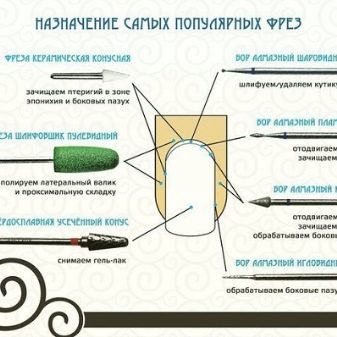
Specialist toolkit
This equipment includes several cutters.
- Spherical diamond cutter. It is difficult for beginners to work with it, because in the absence of skills, the nail can be injured.
- Cutters that are small, process the hardened skin near the nail. A fairly large ball is used to polish the skin around the nail. The specialist selects the instrument depending on the structure of the client's nails.
- Ceramic cutter - "corn", in the absence of skills, heats up very much, begins to vibrate and can damage the nail. Therefore, for beginners, it is better not to use such a nozzle.

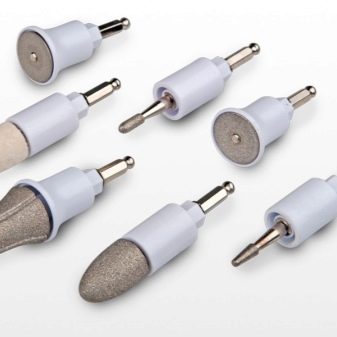
Specifications
German ceramic cutters are endowed with varying degrees of abrasiveness, which is the ability of the bit to remove substances with which it comes into contact. This property arises from particles, the size of which depends on where they will be applied: nails, cuticles or varnish. The degree of abrasiveness is determined by the color of the rim of diamond-coated and ceramic cutters.
- Black color is typical for very coarse items. On the roughest, there are two bezels. Such products are used to remove extended nails, they should not have contact with the skin. They are used only by experienced specialists.
- The green rim indicates hard crumb dusting. Such tools are used for cutting varnish and keratinized skin on the arms and legs.
- Cuticles and rollers are cut with a blue rim cutter, this is the most widely used level of abrasiveness.
- The red rim is small particles, such products are suitable for filing the nail and cuticle.
- Yellow - the smallest particles, cutters with their presence have the least abrasiveness.
- White rim - cutters used to polish the nail.

Security measures
The use of hardware manicure at home should be carried out according to the recommendations. Disinfectants must be used to ensure that instruments and their area of use are decontaminated. Caution should be exercised when using devices with a strong rotation speed, which will help prevent injury.
Grinding the skin around the nail should be done from left to right. In this case, the cutter is kept parallel to the nail. When polishing the sinuses of the nail, do not touch the nail.

Procedure steps
Hardware manicure includes a number of steps.
- Using a cylindrical cutter, the skin around the nail is lifted and its excess is removed by moving the tool to one side. The main thing is not to put pressure on the nozzle to prevent injury.
- Using a fissure cutter, treat the raised skin and sinuses, which will make the skin smooth and eliminate flaking.
- A corundum burr is used to prepare the skin around the nail for cleaning and crack filling.
- With the help of a bullet cutter, all inaccessible places in the nail sinuses are treated. This attachment is not suitable for cutting cuticles as it will cause cuts.
- The use of a ball cutter completely cleans the cuticle. First, pressing movements, then polishing.
- Now the stage of polishing the nails and shaping the desired look.
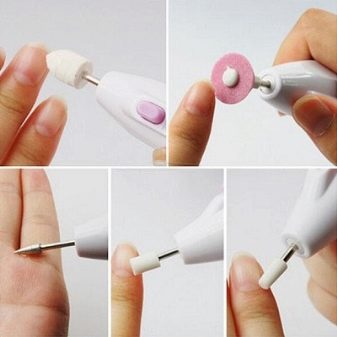

Sterilization of instruments
Tools for manicure nails should not be dirty, they should not have germs. They must be sterilized using various disinfecting solutions, such as Alaminol, Optimax, Gigasept, Korzolex. These formulations are sold as concentrates and must be prepared for future decontamination.
During the disinfection procedure, the hardness of the material and the depth of the nozzle notches must be taken into account. If the coating is soft, then it can deteriorate from prolonged disinfection, thus, the procedure time should be reduced. Sterilization lasts on average from half an hour to 40 minutes.
After being disinfected in the formulations, the cutters move on to further stages of sterilization: cleaning under running water, manual cleaning with a brush, ultrasonic cleaning, placing in an autoclave.

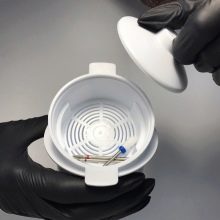
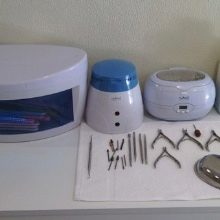
Care
In order for the equipment to serve for a rather long time, they need to be looked after.
- When doing a manicure, do not put too much pressure on the nozzle. This can deform the head at the base of the handle, rendering the tool unusable.
- Replacement of attachments must be carried out in accordance with special rules, usually they are indicated in the manual for the use of the device.
- After passing the disinfection, the instrument is stored in a case, where it will be protected from moisture, dust and various external influences.
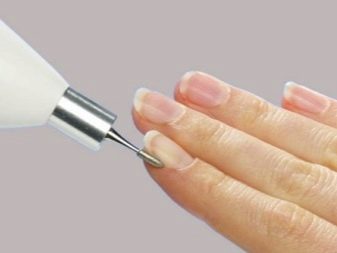
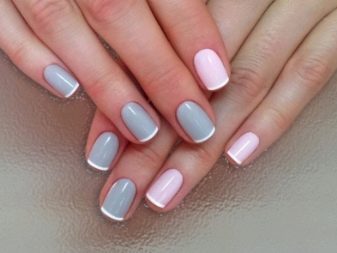
Reviews
Reviews about hardware manicure are mostly flattering. Here, speed and a comfortable state during its implementation are noted as positive moments. The main positive feature is that such a manicure is durable. A new treatment can be carried out after two or three weeks.
Negative reviews are caused by a trip to a master who has low qualifications, in this case, the result is not at all happy. In order to perform a manicure well and efficiently, you need high-quality cutters.
For what you need to know about nail cutters, see the next video.








